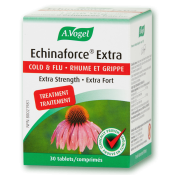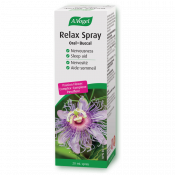Appearance / clinical picture
The term "stress" refers to a person's reaction to a physical or psychological strain caused by specific external stimuli. Examples of such triggers, also known as stressors, are
- chemicals, drugs (chemical stressors)
- heat, noise (physical stressors)
- hunger, injuries, diseases (physical stressors)
- insecurity, fear of failure (psychological stressors)
- conflicts, peer pressure (social stressors)
- critical life events and traumatic events.
Any stress - even a pleasant but distressing stimulus - can cause stress, but it does not have to. This depends on how the person concerned perceives it. Basically, there are three possibilities.
The stimulus is classified as:
- irrelevant. No further reaction.
- stimulating. This leads to eustress - a positive, healthy stress, stimulating for mind and body as well as performance enhancing. An example of this is a new job or an upcoming wedding.
- threatening/harmful. Distress occurs - a negative, unhealthy stress. It puts the body in a permanent state of readiness for fight or flight and, depending on the intensity, can cause physical and psychological symptoms of illness. Examples are occupational overload or noise pollution.
A second (secondary) assessment clarifies whether the situation can be managed and what skills are available to the person concerned. This includes, among other things, the existing self-confidence, material resources (e.g. assets) as well as social support options (transactional stress model according to Lazarus). So this stage determines whether the person feels stressed. If the necessary resources are available, the stress can be managed (adequate coping). If these are missing, stress arises.
Symptoms / complaints
Distress affects the entire organism and can damage it - sometimes irreversibly. It is a risk factor for many different mental, psychosomatic and physical health problems:
- cardiovascular system: chest pain, heart palpitations (tachycardia), increased blood pressure (hypertension), nosebleeds due to increased blood pressure, increased blood fat levels, which in turn can lead to hardening of the arteries (atherosclerosis)
- muscles and skeletal system: tension, especially in the shoulder and neck area, headaches as a result of tense muscles, pain in the lower back or arms
- nervous system: fainting (syncope) due to an overreaction of the nervous system
- reproductive system: effects on the menstrual cycle (e.g. missed periods), recurrent vaginal infections, impotence (erectile dysfunction), premature ejaculation
- gastrointestinal system: heartburn, abdominal pain, stomach discomfort, diarrhoea, constipation or flatulence, eating disorders
- sensory organs: visual disturbances (seeing grey and dark patches, seeing distorted images), increased intraocular pressure, ringing in the ears, decreased pain tolerance
- immune system: increased risk of disease (e.g. infections) or increased risk of severe courses of disease
- sleep disorders, nightmares
Psychological signs of stress:
- nervousness e.g. teeth grinding at night, stuttering, forgetfulness
- difficulty concentrating
- imbalance, dissatisfaction, irritability
- depressive mood, dejection
- feeling ill (hypochondria).
Causes
Stress arises when the burden cannot be managed with the available resources. In this case, the two stress axes are activated:
The sympathetic-adrenal medullary axis, also called the sympatho-medullary system by doctors, is used for short-term adaptation to stress. Within a few seconds, the body reacts to the threatening environmental conditions and activates the sympathetic nervous system. This belongs to the vegetative (autonomic) nervous system, which regulates the processes in the body that cannot be controlled voluntarily, such as breathing or heartbeat. Its activation causes the adrenal medulla to release the hormones adrenaline and noradrenaline into the bloodstream.
These have an effect on various organs. For example, they inhibit the gastrointestinal system, release the stored energy substances fat and glycogen (the storage form of sugar and carbohydrates) and increase the heartbeat, which improves blood flow to the muscles, skin and brain. In addition, they have a dilating effect on the bronchial tubes, so that oxygen uptake increases. The body is now ready for fight or flight (fight-and-flight response).
The hypothalamic-pituitary-adrenal axis is activated with a time delay. It prepares the body for the stress to last longer (longer-term adaptation). After exposure to the stressor, a cascade of reactions is triggered, which finally causes the adrenal cortex, a sub-area of the adrenal gland, to release cortisol. The consequences of this hormone are, on the one hand, various specific and non-specific defence processes. In order to maintain a constant blood sugar level even under extreme environmental conditions, amino acids are converted to glucose when there is a high concentration of cortisol in the blood. If cold is the cause of the stress, cortisol causes the release of thyroid hormones to increase the basal metabolic rate and thus the body temperature.
In addition, cortisol also alerts the natural or innate immune defence (non-specific immune system), the first instance in the defence against pathogens, e.g. virus-related infections. The number of natural killer cells and phagocytes increases so that bacteria, fungi and viruses can be rendered harmless more effectively. However, shortly after the increase, the amount of immune cells quickly drops again. In addition, cortisol interacts with a network of different nerve and immune messengers and thus increases susceptibility to infections. Some of these messengers suppress an appropriate immune response or disrupt the barrier function of the skin and mucous membrane so that pathogens can penetrate more easily.
These processes are the reason why acute stress tends to stimulate the immune system, whereas chronic stress weakens it.
Medical treatment
Special stress management training helps to reduce stress, in which affected persons learn how to deal constructively with stressors and how to react appropriately to stress. The trainings usually consist of the following elements:
- Patient education includes topics such as recognising stress and distinguishing between stressors and stress reactions at cognitive, emotional and physiological behavioural levels
- In problem-solving training, those persons affected learn, among other things, to identify the stressful situation, to observe themselves, to analyse the thought and behaviour patterns and to implement alternative actions in everyday life.
- In enjoyment promotion, possible enjoyable but neglected activities are recorded and new ones are offered. In addition, breaks with activities to compensate for the stresses are planned into the daily routine.
- Relaxation training, in which relaxing techniques such as progressive muscle relaxation, autogenic training and mental techniques such as thought travel or guided imagination (imagining beautiful pleasant images) are taught and practised. Mindfulness-based stress reduction (MBSR), meditation or deep breathing relaxation also help to cope with stress.
Depending on the existing complaints, the following medicines can be used, among others:
- antihistamines as sedatives or sleeping pills
- antidepressants in case of depression
- neuroleptics in case of psychoses
- beta-blockers, which inhibit stress hormones and lower blood pressure.
Important: The best stress management is of no use if the affected persons do not want to change their own behaviour (but only that of others). Because change processes in the environment are directly related to one's own behaviour.
Naturopathic treatment / tips and home remedies for self-help
The following herbal medicines can be used as support against stress:
- Echinacea/Purple Coneflower (Echinacea purpurea) strengthens the immune system to protect against cold and flu viruses and supports the immune systems in times of stress, lack of sleep and for smokers.
- Valerian root (Valerianae radix) alone or in combination with hops, lemon balm and/or passionflower for mild nervous restlessness and insomnia
- Hop cones (Lupuli flos) in combination with other herbal medicines for nervous restlessness and difficulty falling asleep
- Melissa leaves (Melissae folium) have a calming effect on the stomach and intestines in addition to their relaxing and sleep-inducing effect.
- Lavender flowers (Lavandulae flos) for anxious moods
- St. John's wort (Hyperici herba) for nervous restlessness. Caution: St. John's wort can reduce the effect of many drugs. In addition, strong sunlight should be avoided.
- Passionflower herb (Passiflorae herba) for relaxation and sleep disorders
- Rose root (Rhodiolae roseae rhizoma et radix) increases the body's resistance to stressors and improves mental and physical performance.
Homeopathic remedies can also help you to react more calmly:
- Nux vomica D12 for quick-tempered, irritable, impatient people
- Causticum Hahnemanni D12 for melancholic, anxious people
- Ambra D12 for constant excessive demands, nervousness, social withdrawal
- Agaricus D12 for irrational fears and nervousness
- Acidum phosphoricum D12 for physical/mental exhaustion and concentration difficulties
- Pulsatilla D12 for moody, tearful people
- Staphisagria D12 for strong irritability due to overstrain
- Cimicifuga D12 for indecision and alternation of despair with euphoria
- Sepia D12 for indifference and irritability
- Ignatia D12 for changing moods with hysterical outbursts, grief.
There are also some simple methods for calming down in general:
- Relaxing with a warm bath
- Washing hands with warm water. This relaxes the muscles and has a calming effect.
- Humming a melody. The vibration of the vocal cords calms the nerves.
- A small bag with things that evoke pleasant memories or stimulate the senses, such as pictures, a souvenir from the last holiday or a fragrance. This directs the thoughts to positive memories and has a relaxing effect.
- Loosening up with stretching, deep breathing and grimacing
- Relaxing facial muscles by chewing. Celery stalks, for example, which contain the calming plant pigment apigenin, are a good choice here.
- Promoting serenity with special phrases prepared for stressful times. Examples of such sayings are "I don't have to do anything" or "I can take a break at any time".
Complications
Chronic stress can become life-threatening in extreme cases. The following physical complications are possible:
- heart attack, stroke - a consequence of permanently elevated cholesterol levels
- coronary heart disease
- facial nerve paralysis
- lung diseases
- kidney diseases
- Alzheimer's
- allergies
- metabolic disorders such as diabetes.
Furthermore, stress can be the cause of the following mental illnesses:
- depression
- anxiety and panic attacks
- burn-out, i.e. feeling constantly overtaxed, declining performance, withdrawal from activities
- tiredness of life (suicidality).
When to see a doctor
Frequent or prolonged stress can cause serious complications. A visit to the doctor is therefore always advisable if the complaints do not subside or even increase, if they do not improve even after a recovery phase and if the level of suffering increases.
Risk factors
Stress is an imbalance between a situation with a demand on the one hand and a person with his/her abilities on the other hand. The imbalance is perceived as unpleasant and stressful. Risk factors are therefore:
- multiple, simultaneously existing stressors such as threats or demands from the environment (e.g. overload from work, family), social threats or demands (e.g. pressure to meet deadlines, pressure to succeed), little free time or lack of compensation for work.
- intense, recurring stressors such as family violence, chronic illness, a disease leading to death, worries and fears.
- inadequate resources such as financial or social resources (e.g. conflicts in the immediate family, among friends, at work; little social support).
Prevention
A positive stress load is characterised by a harmonious alternation of tension/activity and recovery/relaxation. The inability to take breaks, i.e. chronic stress, makes people ill in the long run. What helps:
- movement breaks with varied movement, e.g. progressive muscle relaxation, Tai-Chi, yoga and Qigong
- endurance training, e.g. cycling, jogging
- mental relaxation with meditation, bio-feedback or autogenic training. These techniques should be learned in a course.
- enjoying with massages, walks or doing nothing.
Stress prevention also includes
- confidence in oneself and one's abilities
- show others the limits in good time and say "stop"
- time management and prioritisation so that work can be done more proactively.
- a positive attitude to life (not focusing on oneself, optimistic attitude), because stress starts in the head.
- a good social network with family ties and being involved, e.g. in a sports club
- a healthy lifestyle with a balanced diet rich in nutrients. B vitamins and magnesium, for example, are particularly important for the nerves, and sufficient fluid intake improves performance.
Especially for children
Causes of stress in children are
- drastic life events e.g. divorce of parents
- a constant excessive demand, for example at school
- to meet the psychological and social demands placed on the child at a particular stage of life (developmental task), e.g. transition from kindergarten to school.
Children usually react to such stress with physical complaints such as headaches, stomach-aches or difficulty falling asleep. However, concentration difficulties, loss of appetite, listlessness and lack of drive are also possible. For prevention (prophylaxis), parents should
- plan free spaces, movement and relaxation for the child
- make the children aware of their strengths so that they can better deal with problems.
- praise the children and strengthen their self-confidence
- support the children in solving problems
- have no false expectations
- impart positive thinking
- let their children set their own priorities
- have fun together with their children.
Especially during pregnancy
Major stress can cause conception problems or even a period of infertility even in young couples. This reaction of the body makes sense, as psychological or physical stress prevents the woman from concentrating on the pregnancy. If the situation returns to normal, the conception problems also disappear.
During pregnancy, low stress is not harmful for the child. On the contrary, researchers even suspect that it may promote the child. However, if the mother is massively stressed, this can have an unfavourable influence on the child's development. Possible consequences for the baby are:
- a premature birth
- a birth weight that is too low
- higher stress sensitivity
- higher susceptibility to psychiatric disorders, such as depression
- neurological and emotional developmental disorders such as ADHD
- behavioural problems.
Most frequent question: What is the vulnerability-stress model?
According to the vulnerability-stress model or also the diathesis-stress model, mental illnesses arise when there is both an increased susceptibility (diathesis, predisposition, vulnerability) and current and chronic strains (stress).
Sources:
Internet:
https://www.mentalhelp.net/stress/the-long-term-consequences-of-negative-stress/ (Abruf: 02.03.2022)
https://www.ncbi.nlm.nih.gov/pmc/articles/PMC7879592/ (Abruf: 02.03.2022)
https://www.internisten-im-netz.de/fachgebiete/psyche-koerper/stress.html (Abruf: 02.03.2022)
https://www.neurologen-und-psychiater-im-netz.org/psychiatrie-psychosomatik-psychotherapie/risikofaktoren/arbeitsleben/belastungsfaktoren/stress/ (Abruf: 02.03.2022)
https://www.neurologen-und-psychiater-im-netz.org/neurologie/ratgeber-archiv/artikel/chronischer-stress-schwaecht-das-immunsystem/ (Abruf: 02.03.2022)
https://www.apotheken-umschau.de/mein-koerper/immunsystem/wie-die-psyche-das-immunsystem-beeinflusst-722369.html (Abruf: 02.03.2022)
https://www.apotheken-umschau.de/gesund-bleiben/psyche/stress-in-der-krise-wege-zur-gelassenheit-706215.html (Abruf: 02.03.2022)
https://www.apotheken-umschau.de/gesund-bleiben/psyche/stress-verhindern-burnout-vermeiden-702149.html (Abruf: 02.03.2022)
https://www.thieme.de/de/presse/abwehrkraefte-in-pandemiezeiten-163041.htm (Abruf: 02.03.2022)
https://www.deutsche-apotheker-zeitung.de/daz-az/2017/daz-9-2017/nur-kein-stress (Abruf: 02.03.2022)
https://www.pharmazeutische-zeitung.de/stressfrei-mal-drei-127324/ (Abruf: 02.03.2022)
https://www.globuli.de/wissen/behandlung/angst-nervositaet/stress/ (Abruf: 02.03.2022)
https://www.aerztliches-journal.de/medizin/kardiologie/herz-kreislauf-krankheiten/herzinfarkt-emotionaler-stress-unterschaetzt/71b587e1f7f9ef8bb83b5b4b6f0ae36a/ (Abruf: 02.03.2022)
https://www.kinderaerzte-im-netz.de/altersgruppen/schulkinder/entwicklung-erziehung/stress-im-kindesalter (Abruf: 02.03.2022)
https://www.charite.de/service/pressemitteilung/artikel/detail/gelassen_durch_die_schwangerschaft/ (Abruf: 02.03.2022)
https://www.aerzteblatt.de/nachrichten/58079/Stress-ein-Grund-fuer-unerfuellten-Kinderwunsch (Abruf: 02.03.2022)
https://www.mpg.de/13821177/0821-pskl-137341-stress-vor-der-geburt-erhoeht-das-risiko-fuer-psychiatrische-erkrankungen (Abruf: 02.03.2022)
https://www.thieme.de/de/gynaekologie-und-geburtshilfe/chronischer-stress-beguenstigt-fruehgeburtlichkeit-97763.htm (Abruf: 02.03.2022)
https://www.allergieinformationsdienst.de/en/news-events/events/news/article/stress-in-der-schwangerschaft.html (Abruf: 02.03.2022)
https://www.frauenaerzte-im-netz.de/erkrankungen/unfruchtbarkeit/ursachen/ (Abruf: 02.03.2022)
https://www.usz.ch/krankheit/fazialisparese/ (Abruf: 03.03.2022)
https://www.herzstiftung.de/infos-zu-herzerkrankungen/koronare-herzkrankheit/ploetzlicher-herztod/ohnmacht (Abruf: 03.03.2022)
https://www.aerzteblatt.de/nachrichten/59901/Stress-kann-Sehstoerungen-ausloesen (Abruf: 03.03.2022)
https://www.nimh.nih.gov/health/publications/so-stressed-out-fact-sheet (Abruf: 03.03.2022)
https://leitbegriffe.bzga.de/alphabetisches-verzeichnis/stress-und-stressbewaeltigung/ (Abruf: 03.03.2022)
pdf:
Hügle: Physiologische Veränderungen des Stressmarkers Cortisol, der Wachstumsfaktoren BDNF und VEGF, der Struktur des Hippocampus sowie kognitiver Fähigkeiten während eines Langzeitaufenthalts in der Antarktis, Dissertation (2021)
(https://refubium.fu-berlin.de/bitstream/handle/fub188/28974/Dissertation_HuegleManuel.pdf;jsessionid=99CD93AE27C31CB01B8FDD2159E1E9EB?sequence=1)
Keitel: Endokrine und subjektive Stressreaktionen im Rahmen simulierter Notfallsituation: Studien in einem Full-Scale-Patientensimulator, Dissertation (2011)
https://osnadocs.ub.uni-osnabrueck.de/bitstream/urn:nbn:de:gbv:700-2012031610067/2/thesis_keitel.pdf
Wippert: Der Körper unter Spannung, Ergopraxis 5/09
(https://www.thieme.de/statics/dokumente/thieme/final/de/dokumente/tw_ergotherapie/hintergrundwissen_stress.pdf)
Landesportbund Nordrhein-Westfalen: Schutzfaktoren und Risikofaktoren
(https://www.vibss.de/fileadmin/Medienablage/Sportpraxis/WZ_Wissenswertes/Stress/WZ_Wissenswertes_-_Stress_-_Schutz-_und_Risikofaktoren.pdf)
Books:
Pschyrembel, DeGruyter, 268. Auflage (2020)
Löhmer, Standhardt: MBSR, Klett-Cotta, 3. Auflage (2015)
Pflege Heute, Urban&Fischer, 6. Auflage (2014)
Schewior-Popp, Sitzmann, Ullrich: Thiemes Pflege, Thieme, 12. Auflage (2012)
Strobel: Stressbewältigung und Burn-out-Prävention, Thieme, 3. Auflage (2021)






